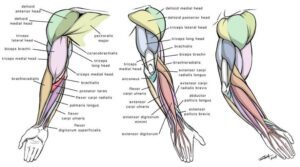The human body is a marvel of nature, with its intricate design and complex systems. One of the most fascinating aspects of our anatomy is the structure of the arm, which allows us to perform a wide range of activities, from picking up a pencil to throwing a baseball. In this blog post, we will delve into the inner workings of the arm, specifically focusing on the phalanges and their relationship to the humerus bone.
Contents
The Human Arm: An Overview

Before we dive into the specifics, let’s first take a moment to understand the basic components of the human arm. The arm is divided into three main parts: the upper arm, forearm, and hand. The upper arm consists of a single long bone called the humerus, which runs from the shoulder to the elbow. The forearm contains two bones: the radius and the ulna, which extend from the elbow to the wrist. Finally, the hand is composed of numerous small bones, including the phalanges.
The Phalanges: What Are They?
The phalanges are a group of bones found in the hand, with each finger (except the thumb) having three phalanges, and the thumb having two. These bones are often referred to as the finger bones and are responsible for the movement and flexibility of our fingers. However, when we consider the arm as a whole, we must recognize the connection between the phalanges and the humerus.
What’s that smell food fitness family Can Improve Your Health and Happiness
The Role of Phalanges in the Arm
To understand the role of phalanges in the arm relative to the humerus, it’s important to acknowledge that while phalanges are primarily located in the hand, they play a crucial role in the overall functioning of the arm. The phalanges are connected to the metacarpal bones, which, in turn, are connected to the carpals (wrist bones). These bones form the bridge between the hand and the forearm.
When we move our arm, the humerus acts as the primary bone responsible for the gross movements of the arm. It provides support and strength for activities like lifting and carrying. The forearm bones, the radius and ulna, facilitate the rotation of the forearm, allowing us to twist our hand and wrist in various directions. This rotation is essential for tasks like turning a doorknob or using a screwdriver.
Now, where do the phalanges come into play? While they may not be directly connected to the humerus, they are vital for finer movements of the hand and fingers. When we grip, grasp, or manipulate objects, the muscles in our forearm contract, pulling on the tendons that connect to the phalanges. This action allows us to perform precise tasks like typing on a keyboard or picking up small objects.
In essence, the phalanges complement the function of the humerus by enabling dexterity and precision in our arm movements. They are the final link in the chain that allows us to interact with our environment effectively.
Conclusion
In a human arm, the phalanges are integral to the humerus, albeit indirectly. While the humerus provides strength and stability, the phalanges add finesse and precision to our arm movements. Together with the other bones in the arm, they create a harmonious system that allows us to perform a wide range of tasks, from the most robust to the most delicate. So, the next time you reach for your coffee mug or type a text message, remember the remarkable synergy between your humerus and phalanges that makes it all possible.